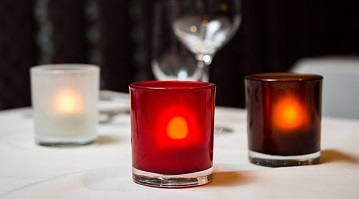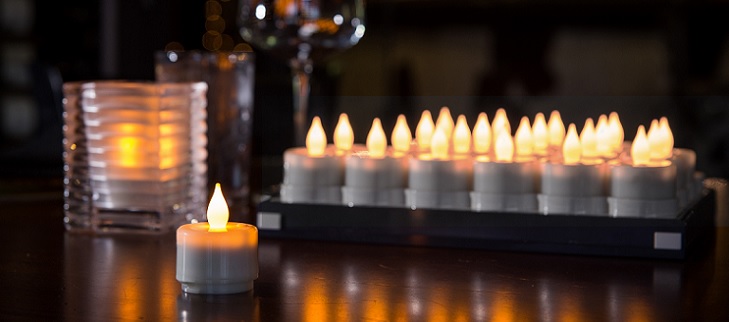
NATIONAL REPORT—Rechargeable, “flameless” LED candles have been around for quite some time but technological advances, design improvements and environmental and economic awareness have made them the preferred choice for thousands of hoteliers and restaurateurs.
The environmental impact of the burning and disposing of wax candles is significant. According to The Amazing Flameless Candle, a 48-table restaurant will go through 122,000 tea lights, 61,000 votives or 17,000 non-recyclable, oil saturated plastic fuel cell containers over five years as compared to just 48 flameless candles.
In addition to the waste-related costs associated with disposable candles, there are also safety concerns. In New York City, for example, an Open Flame Permit is required prior to using wax candles. Similarly, in Boston a permit is required for some candles and the fire department there formally prefers the use of LED lighting.
Burning candles can not only start a fire; they can also negatively impact indoor air quality. A study by scientists at Copenhagen University conducted on mice found exposure to particles from burning candles to cause greater damage than the same dose of diesel exhaust fumes. The harmful effects of candle smoke included lung inflammation and toxicity, arteriosclerosis, and aging effects on chromosomes in the lungs and spleen.
A study led by Dr. Amid Hamidi from the University of South Carolina found that paraffin-based candles produce several chemicals, mainly because they do not burn at a high enough temperature to destroy the hazardous molecules they emit. Additional research from the U.S. Environmental Protection Agency found scented candles to produce more soot than unscented, the particles of which can infiltrate deep into one’s lungs and be harmful to the respiratory system. A longer candle wick will produce more soot and a smoky flame, which releases even more air pollution.
A Very Reasonable ROI
From an economic standpoint, rechargeable candles can be easily justified. Most hospitality venues either use tea lights, votives, fuel cells or flameless candles. According to The Amazing Flameless Candle, assuming a 48-table restaurant operating a seven-hour/seven-day dinner shift, over one year, tea lights would cost $2,943, votives would cost $3,433, fuel cells would cost $2,657, and flameless candles would cost $1,300. It is in month six when a restaurant can start to benefit financially from using flameless candles as opposed to traditional burning candles.
Colin LaBerge, CEO of The Amazing Flameless Candle, says his company’s LED candles typically last five years and sometimes years longer.
“The primary reason people buy our products is the cost-saving factor,” LaBerge says. “They are eliminating a consumable product and the waste of those candles over the life of the product. A lot are switching over because they care about the environment.”
Design & Functionality Also Important
While cost, health and the environment certainly come into play when selecting candle type lighting, as important as ever are aesthetics, design, ease of use, and technological capabilities. The Lux Series Rechargeable Tea Light Collection from The Amazing Flameless Candle, for example, features a natural candle light color and flicker with a realistic flame shape designed to maximize glow throughout the candle’s 20-hour battery life. A remote control turns the candle on and off, one can set a 2, 4, 6 or 8-hour daily timer, switch between a static light or candle flicker, or brighten or dim the light. The candles are fully waterproof. Some flameless candles offer up to six colors and up to three flicker patterns.
“A lot of restaurants and hotels are becoming more open to the technology,” LaBerge says. “The flameless candles look more realistic.”
When asked what advice he would give to someone considering flameless candles for the first time, LaBerge said, “Understand the reason you are switching over to rechargeable lights. The candles need to last for four-plus years. It will mitigate your costs and help the environment. Also, make sure your candle holders are appropriately sized.” LaBerge says some flameless candles require a frosted glass holder.
Glenn Hasek can be reached at editor@greenlodgingnews.com.







